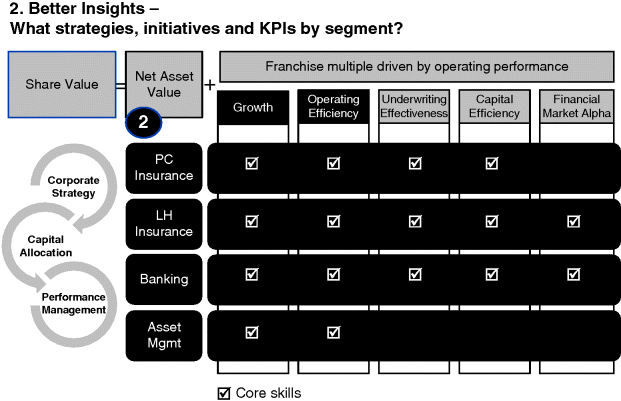Part ThreeBetter Insights – Managing Value
What gets measured, gets managed. If we want to manage shareholder value, we first have to measure it.
The previous part of the Handbook argued that value managers should use market-consistent approaches combined with New Business and Investment RAPMs to measure value because they better reflect share values than accounting-based approaches and because they provide better insights for managing risk-based, capital-intensive businesses.
While better information is necessary, it is not sufficient: ultimately, the right decisions have to be taken. How, then, to translate better information into better management? In the interests of simplicity, we define management as the set of:
- strategies, defining high-level goals;
- actions, needed to achieve those goals; and
- metrics, used to determine whether the goals have been attained.
CFOs and CROs can create value in their companies by challenging and shaping the strategies, actions and metrics used to manage the business. Strategies and actions are unique to the firm. However, it is possible to define rules of the game, or generic strategies, and core competencies generically used in creating value.

Figure P3-1 Structure of the following chapters
Challenging and influencing management decisions takes better insight. As illustrated in the following figure, this part of the Handbook outlines the ...
Get Value and Capital Management: A Handbook for the Finance and Risk Functions of Financial Institutions now with the O’Reilly learning platform.
O’Reilly members experience books, live events, courses curated by job role, and more from O’Reilly and nearly 200 top publishers.

